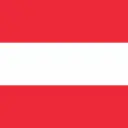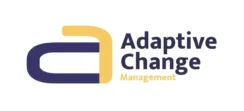The time savings model for organizstions is a simplified concept that helps us understand how to optimise efficiency. By considering factors like complexity, resource allocation, and the learning curve, our aim is to reduce the time spent on any task. This approach allows us to identify opportunities for improvement and enhance overall productivity and development efficiency.
The establishment of time-savings
We prioritise time savings by avoiding a team-first approach as we scale knowledge work. Socioeconomic Kanban Systems help establish the right structures in business, product, or IT management, facilitating rapid development in innovative cycles. Our approach emphasizes people working for people.
In driving innovation, permeable hierarchies supporting a culture of trust and anticipating dynamics swiftly are crucial. Continuous learning, customer-centricity, and stable systems enhance adaptability. Embrace high-tech solutions and foster interdependent interactions to utilize time effectively. Increased interaction, both internally and externally, is pivotal for driving innovation. Our experience lies in combining economic thinking at all levels, customer-centricity, trust in hierarchies, and Socioeconomic Kanban Systems to enhance certain and stable adaptability.
The concept of time
The clue lies in embracing a novel perspective on time. By reframing our understanding and utilisation of time, we unlock new possibilities for efficiency. The concept of time as a distance metric is rooted in the idea that time can be treated as a measure of separation or interval between events. Using time as a distance metric involves considering the temporal separation between events or points in the Socioeconomic Kanban System. With this concept, we offer a valuable paradigm shift for understanding and quantifying processes, movements, and changes within various Socioeconomic Kanban Systems.

An example of a model for time savings
- Ts represents the total time spent on tasks before any optimization.
- Ta represents the time spent after optimization, resulting in time savings. The time saved is calculated as the difference between the total time before optimization and the time after optimization, expressed as ΔT=Ts−Ta.
- E is the efficiency factor, which indicates the impact of optimization on time savings.
application of adaptive change management Approach
At Adaptive Change Management, we recognize that facilitating enduring change demands adaptive strategies that extend beyond mere quick solutions. Our skilled team is committed to aiding organizations of various sizes in realizing their full potential through the application of adaptive change management methodologies.
- By adopting innovative frameworks and remaining ahead of market trends, we empower enterprises to steer through changing environments confidently.
- Our change approach considers the specific complexities and resources at hand, shaping a customized solution that promotes growth and optimizes efficiency.
- Through our time optimization strategies, we transform your perception of time within Socioeconomic Kanban Systems as a pivotal resource.
Fill out the form below, and we will respond within 48 hours.
Contact Us
We Shape The Future!
valuable. adaptive. innovative.
Our path of cooperation: Building trust, fostering relationships, and delivering value.
Get In Touch
- +381 65 6251 806
- +43 3322 43215
- +43 3322 43215
- [email protected]
Hours
- Mon-Fri 9:00AM - 5:00PM
- Sat 10:00AM - 2:00PM
Call us

+43 664 66 53 975

+381 65 6251 806

+43 3322 43 215

+43 3322 43 215
Trust is one of our most prized assets! We don’t make personal data available to other third parties for use.

